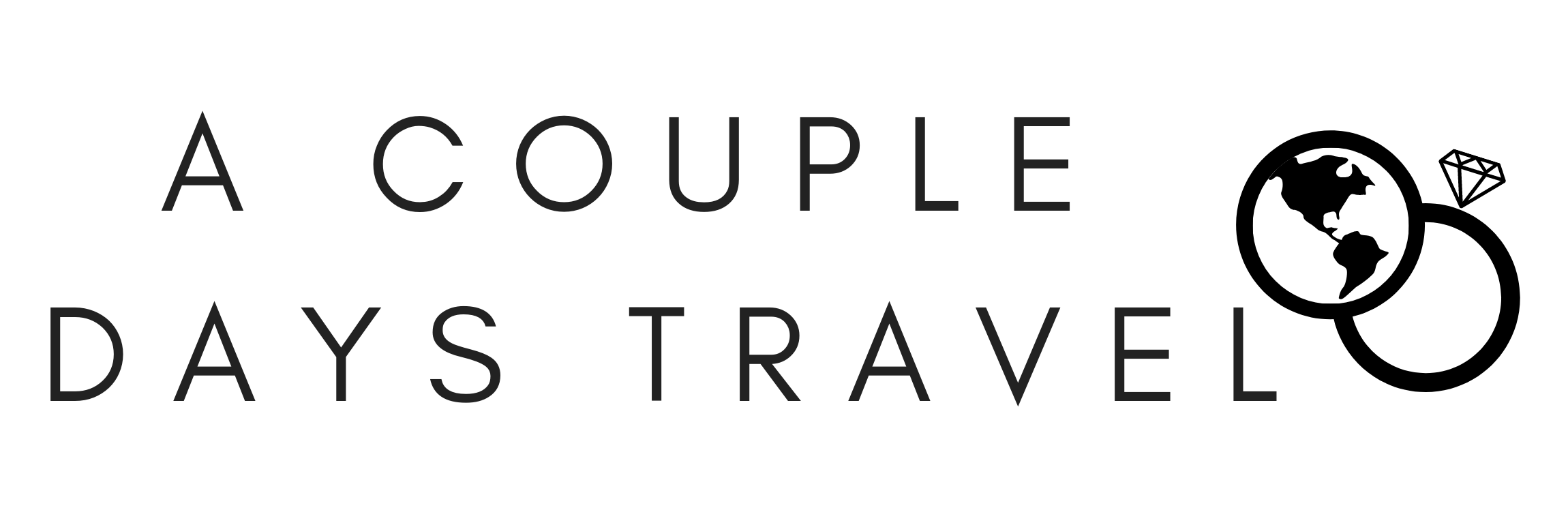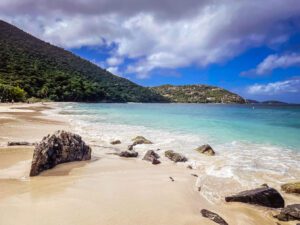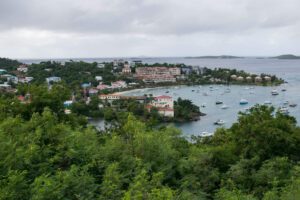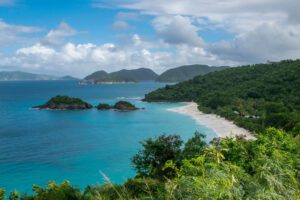A U.S. National Park in the Caribbean surrounded by pristine reefs – sign us up! So when we made our way to Virgin Islands National Park we were not surprised to see beautiful white sands and multiple shades of blue in the water. However, what did surprise us was just how many amazing beaches there are and just how many easily accessible reefs we found. Additionally, we loved how rustic the beaches were and how uncrowded such spectacular beaches stayed. If this unassuming beach wilderness sounds like your idea of a good time, keep reading to find all you need to know to plan your own visit to the Virgin Islands National Park, including a list of the best things to do in the Virgin Islands National Park.
How to use this map: The map above has all of the attractions mentioned in this post. Click on each attraction to learn more about it. If you’d like to save this map, click on the square “View Larger Map” icon. This will open the map in your Google account (make sure you’re signed in). You can reference it in your account or you can create a copy to make your own edits.
Stuff In This Post
ToggleWhere is Virgin Islands National Park?
Virgin Islands National Park is on the island of St. John in the Caribbean Sea. It is one of the Easterly islands, near Puerto Rico.

What Is Virgin Islands National Park Known For?
Beaches, beaches and beaches. This is one of the best U.S. National Parks for a beach vacation. In addition to the sand and seas on the beaches, Virgin Islands National Park is also known for the healthy coral reefs near the shore which makes it a great destination for snorkeling.
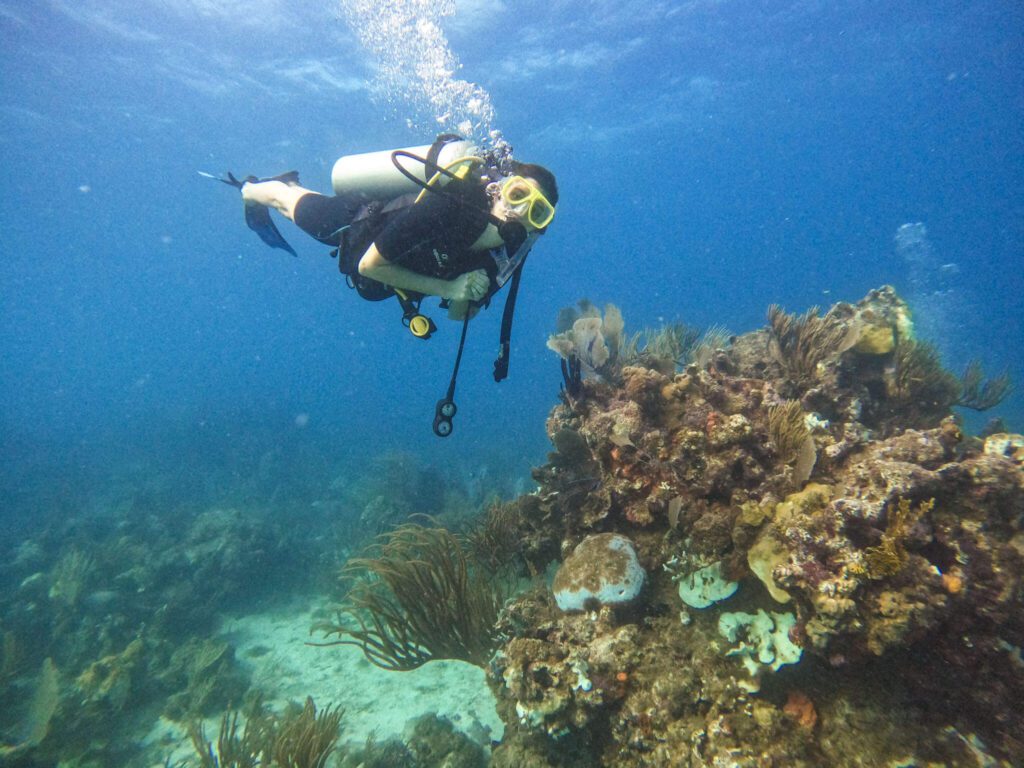
Virgin Islands National Park History
Virgin Islands National Park covers about two thirds of the island of St. John. In addition to most of the island, the National Park encompasses over 5,000 acres of the underwater world. With all of this pristine wilderness, this park boasts amazing snorkeling and beautiful beaches. Additionally, the waters on the east side of the island are protected in the Virgin Islands Coral Reef National Monument.
Additionally, visitors can also enjoy history on the island, including petroglyph rock carving by the Taíno people and sugar plantations built by slave labor.
The Virgin Islands National Park was donated by Laurance Rockefeller in 1956 with the understanding that the land wouldn’t be developed. So it became a National Park. Rockefeller’s original estate is now run as Caneel Bay Resort, the only resort in the Virgin Islands National Park.
The park was hit by two whopping hurricanes in 2017 and 2018. So while the island has recovered quickly, as jungles do, the vegetation is newer and smaller than it used to be. Don’t worry, those big palm trees will be back before long. Nature is awesome. But if you’re looking for the slanty palm trees of old, they are few and far between.
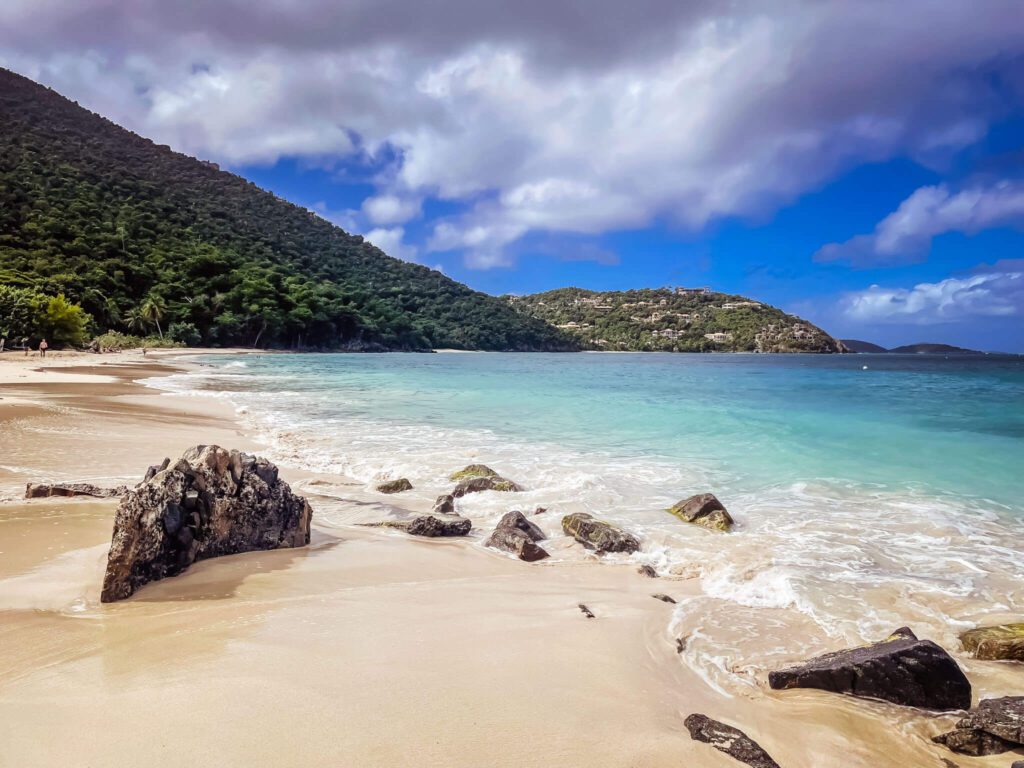
How Long To Spend In Virgin Islands National Park?
You can visit Virgin Islands National Park as a day trip from St. Thomas, USVI. And many people do. However, you will definitely have to pick and choose where you stop – or you could stop everywhere to take in the scenery and then hop back in the car. With one day in Virgin Islands National Park, you can drive the North Shore Road, stopping at all the viewpoint and then choose one beach to relax and snorkel on (we’d choose Mayo Bay).
To explore everything, including stops at all the overlooks, some beach laying, some snorkeling and some hiking you’ll need 2-3 days in the park.
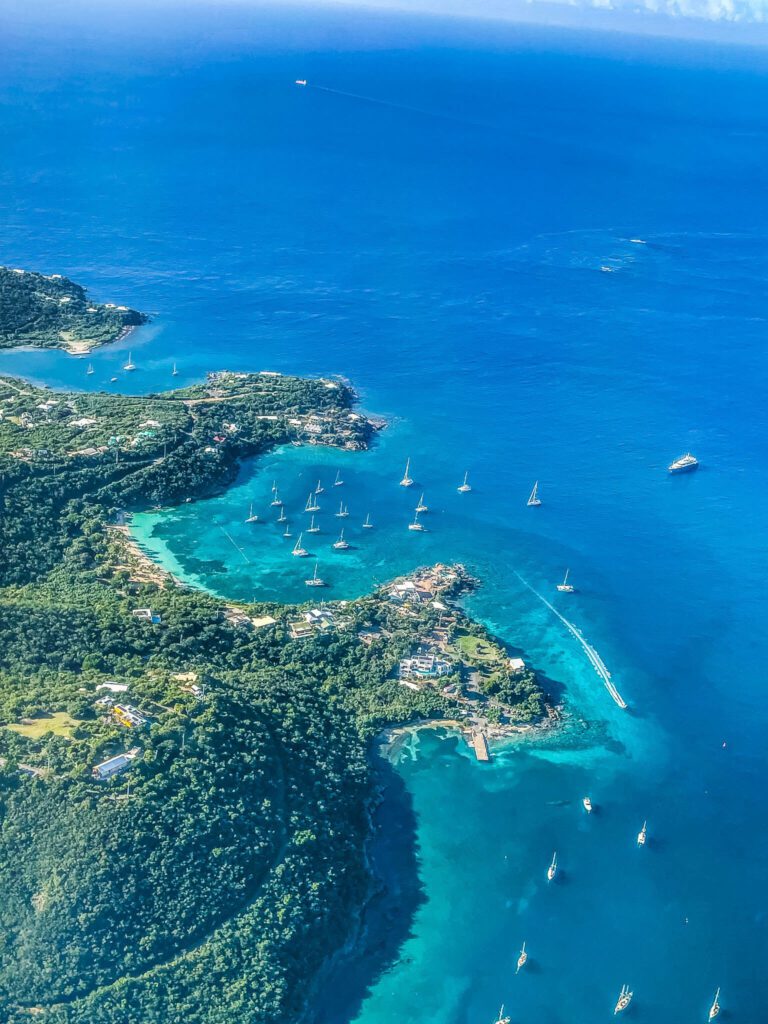
Getting There And Around
Getting To St. John
There is no easy way to get to Virgin Islands National Park. Which is probably why it is one of the least visited National Parks and why it still has such pristine and raw beaches.
First, you fly into St. Thomas, the closest island with an airport. You’ll land in Charlotte Amalie. Flights into this island are likely multi-leg journeys (unless you’re coming from a U.S. airport hub). Lots of airlines don’t fly direct to St. Thomas and those that do typically only do in during the peak tourist season.
Next, you’ll need to take a taxi from the airport to Red Hook, which is on the opposite side of St. Thomas.
Next, you’ll catch a 30 minutes ferry from Red Hook, St. Thomas, to Cruz Bay, St. John. These ferries depart every hour so you’ll have not trouble catching one.
Getting Around St. John
Lastly, once you’re in St. John you’ll need to rent a car or take a cool taxi to the Virgin Islands National Park. Taxis on the island operate more like buses and look more like trucks with seats in the bed of the truck – but those taxi drivers operate more like tour guides stopping to give you a history of the island. Rental cars on the island are all 4WD large vehicles to help you navigate the steep and sometimes rough roads.
Oof, that was a journey. However, it was totally easy to do and everyone on St. Thomas and St. John seems to have an uncanny understanding of how to do it and they are more than happy to help you navigate the multiple connections.

Navigating the Virgin Islands National Park is super easy. There are two main roads. First, North Shore road allows you to see a majority of the park. Second, Centerline Road runs through the middle of St. John and is the main road that people take when getting from Cruz Bay to Coral Bay, the two main cities. If you do choose to drive yourself around, remember that your steering wheel is on the left side of the car AND you drive on the left side of the road (translation for us U.S. folks: American cars on British roads).
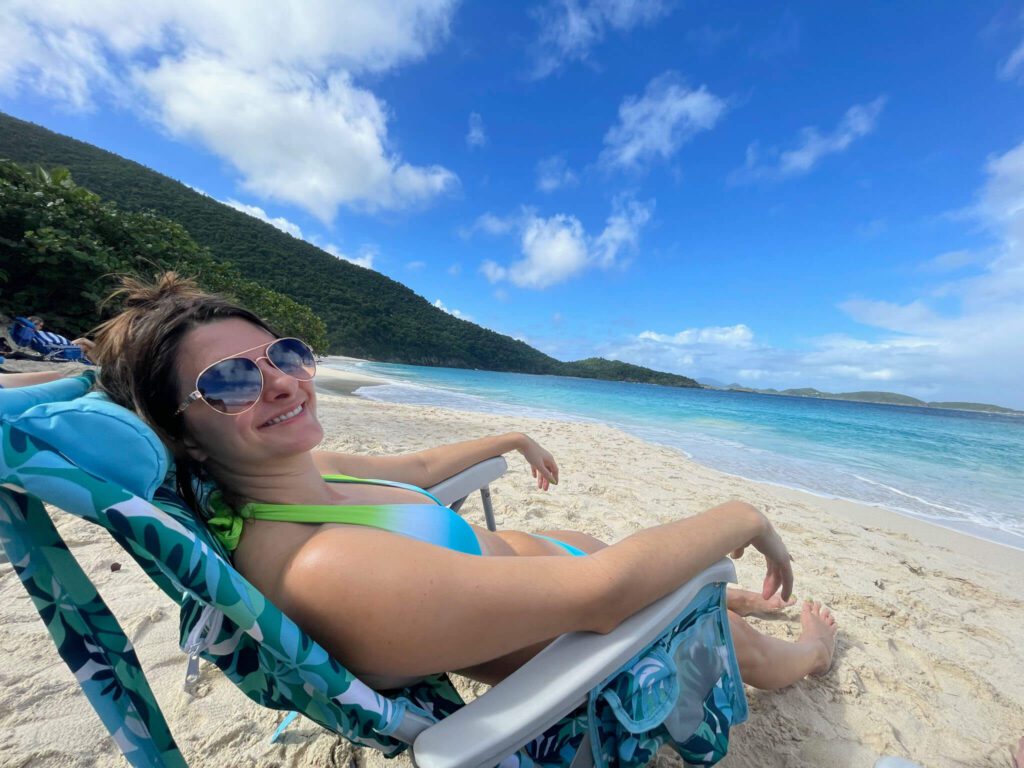
Top Things To Do In Virgin Islands National Park
Beaches
The Beaches reign supreme in the Virgin Islands National Park. But don’t expect a full service bar and glamorous cabanas. These beaches are so much more natural, pristine and beautiful. Exactly what you would expect of a beach in a National Park.
Which beaches are best for beach laying/swimming? Our favorites for spending a whole day on the beach were:
- Cinnamon Bay – big stretches of white sand and plenty of space to spread out
- Maho Bay – plenty of things to do, easy walk to the beach and lots of parking (though it does fill up by lunch)
- Trunk Bay – all the amenities you could possibly need for a full day at the beach but it is the only beach that comes with a price tag ($5/person)
All three of these beaches have rentals (snorkels, kayaks, etc.) and food and drinks for sale making them convenient for a full beach day. However, because of these amenities, they are all very popular, more crowded than smaller beaches and parking can be difficult.
A note on snorkeling and beaches: you’ll need to choose where you go for these activities based on the wind direction of the day. If the wind is coming from the south, go to a north shore beach. If the wind is coming from the north, go to Waterlemom or a south shore beach.
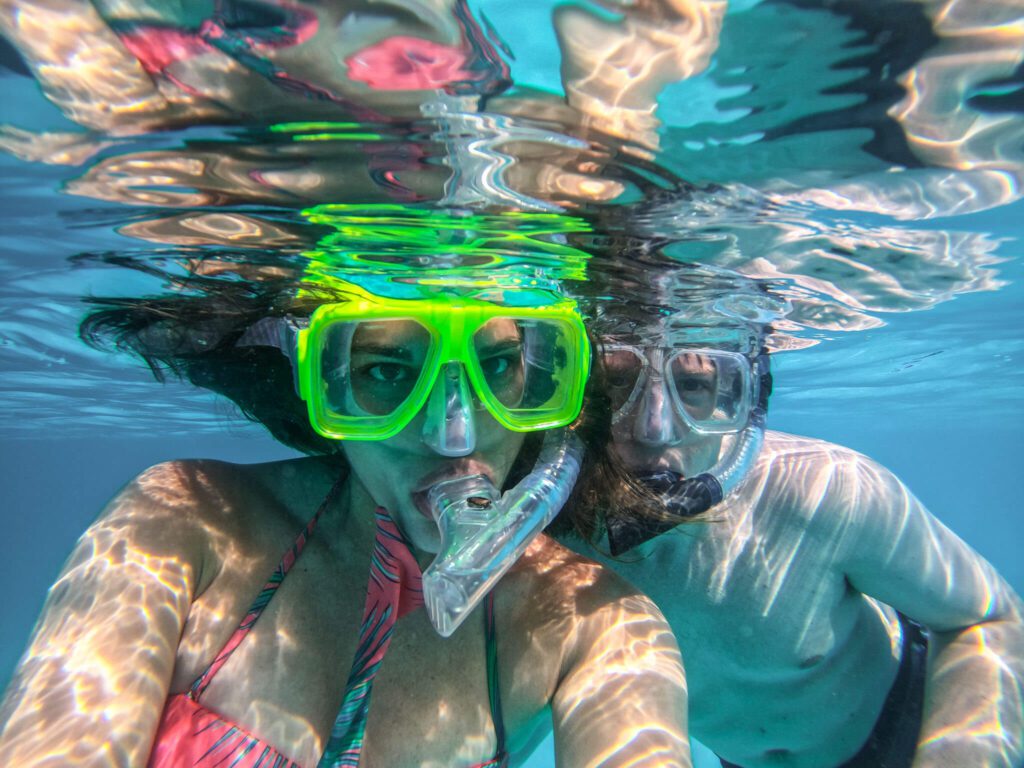
Snorkeling
There is good snorkeling everywhere on this island. We are surprised to say that Virgin Islands National Park has the best snorkeling in the world! You may not see the rarest of fishies or the biggest animals but the shear variety of life on the reefs here and the ease of accessibility make St. John the best spot for snorkeling on the world (if you disagree with me, you can sponsor a trip to any place you think is better).
While every beach is great for snorkeling, here are some of our favorites:
- Best overall – Waterlemon Cay. The healthiest reefs we saw with the most biodiversity and color.
- Best for beginners – Maho Bay. There are lots of shallow reefs and exciting animals like turtles.
- Most sea turtles – Salt Pond Bay. Lots of underwater grass means lots of sea turtles and rays.
- Honorable Mention – Trunk Bay. There is an underwater snorkel trail just off the beach at Trunk Bay. While the actual snorkeling wasn’t the best, it’s pretty cool to follow the underwater signs and learn as you snorkel.

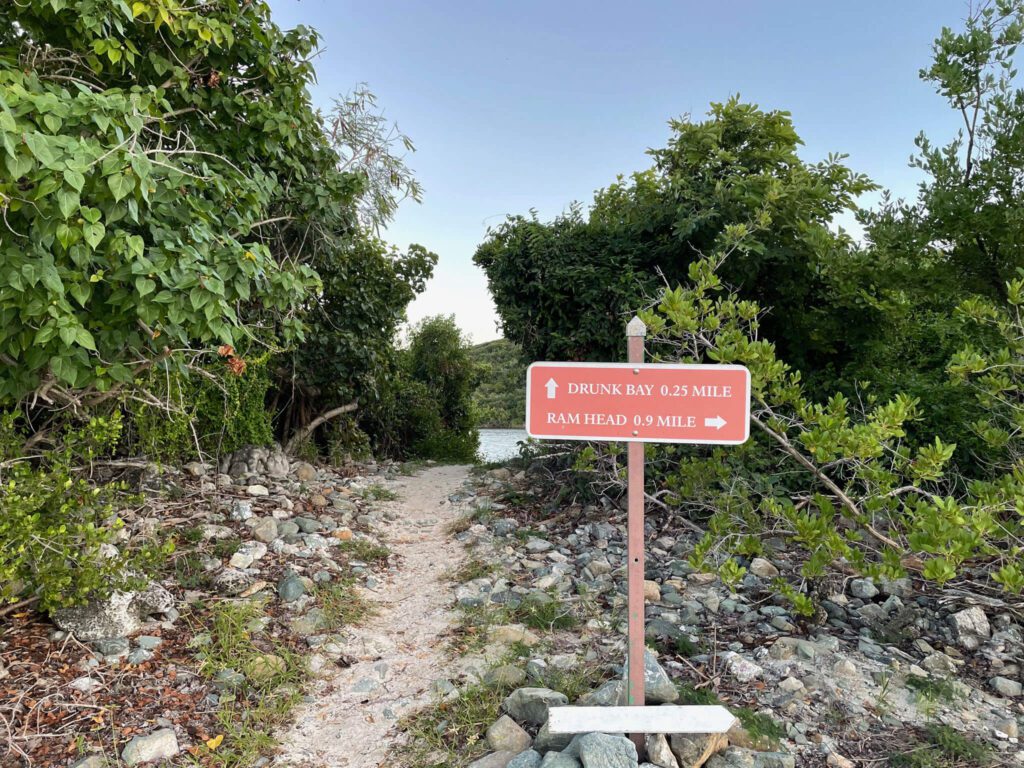
Hiking
So apparently the hiking here is supposed to be some of the best in the Caribbean – we did not think so. But why spend time hiking when one can instead go snorkeling? However, it should be mentioned that there are tons of hiking trails on the island.
Some of the most popular are:
- Easy – Cinnamon Bay Plantation ruins have a .5 mile loop through the ruins and nearby jungle. This trail is mostly flat.
- Intermediate – A 2.3 mile out and back trail taking you to Ram Head and a saltpond as you circle Salt Pond Bay. The views here were amazing!
- Difficult – The most popular “long hike” is the 2.2 out and back Reef Bay trail with the extension of the Petroglyph Trail. This takes you to an abandoned sugar plantation estate and petroglyphs as you hike on a steep hill through the jungle. While the length isn’t much longer than Rams Head, the elevation change is what makes this a more difficult trail.
One hike that we did love was the hike to Ram head. This is the only longer hike that we would actually recommend for the sake of “hiking”. There were plenty of amazing beaches (Saltpond Bay and Waterlemon Bay) at the end of hikes but the walk there wasn’t anything to write home about.
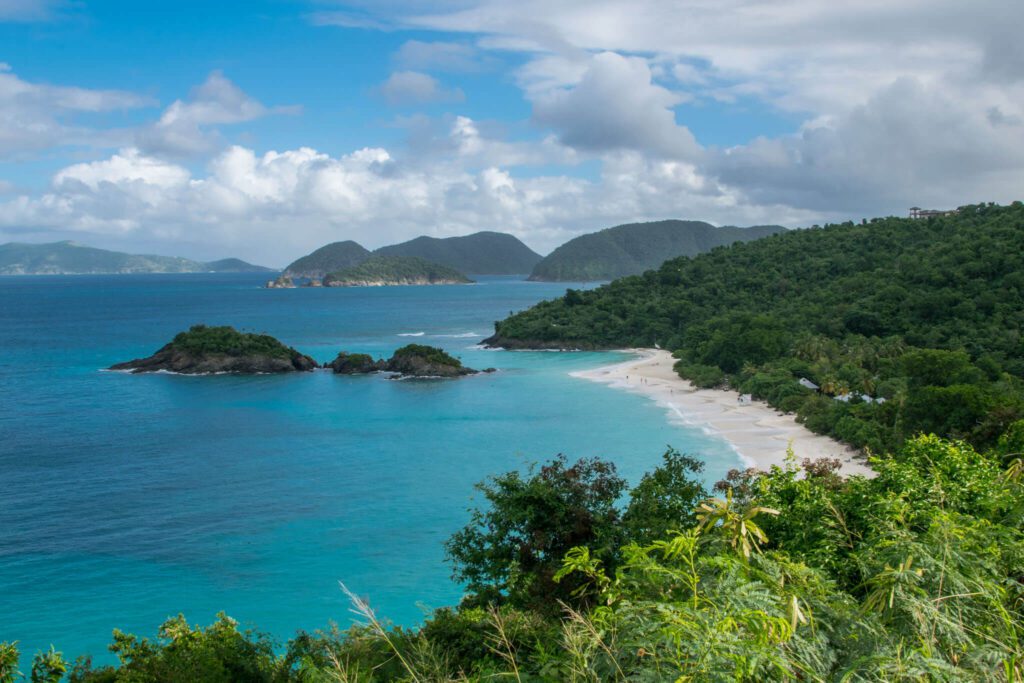
Viewpoints
We call this “vista-ing”. Stopping to take in the vista views. So on an island with steep hills everywhere and twists and turns all over the place, it is no wonder that there are some amazing viewpoints worth stopping for.
The best viewpoints we found on the roadside were:
- Trunk Bay Viewpoint (North Shore Road)
- Maho Bay Viewpoint (North Shore Road)
- Coral Bay Viewpoint (Centerline Road)
- Cruz Bay Viewpoint (North Shore Road)
- Caneel Bay Viewpoint (North Shore Road)

History
St John’s history is steeped in native peoples, slave labor and sugar. And you can see remnants of all of that still in Virgin Islands National Park. Keep in mind that tropical ecosystems are ravenous. So while these historical sites are still present they are very overgrown and sometimes hard to distinguish.
The most popular spots for historical sites are:
- The Reef Bay and Petroglyph Trail – This 2.2 mile out and pack trail takes you from the Centerline Road to the southern cost of the island. Along the way, there is a short spur to see petroglyphs carved by the Taíno people. At the end of the trail, there is the Reef Bay Sugar Mill.
- The Leinster Bay Trail – At the start of this trail, you’ll see the Annaberg Sugar Mill. On the other side of Waterlemon Bay, you’ll see another ruins, the Windy Hill Greathouse. From here you’ll also have great views of Tortola.
- Cinnamon Bay Plantation – Across the road from Cinnamon Bay beach, is a short and easy trail through the wood around a former plantation. This was probably the easiest ruins to access.
Sailing
Catamaran rentals here are extremely popular. There are a few tour available but most catamaran rentals are private charters that take people to a few bays for swimming and snorkeling. While we love a good boat day, we think that the price tag for the catamaran charter isn’t worth the destinations they take you. You can visit all but one of the beaches on the island with a little hiking and minimal amounts of money.
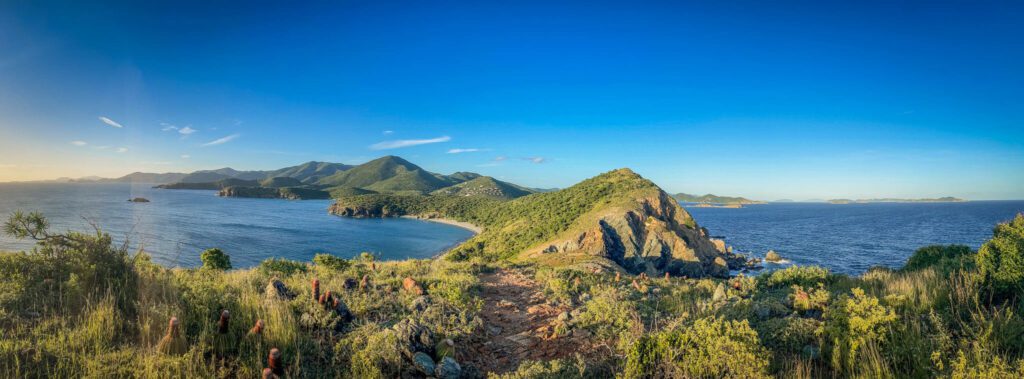
Our Top 5 Favorite Things To Do In Virgin Islands National Park
- Snorkel Waterlemon Bay
- Hike Ram Head Trail
- Maho Bay Beach Day
- Snorkel Maho Bay
- North Shore Road Viewpoints and Drive
What To Pack For The Virgin Islands National Park
It is definitely worthwhile to pack your own snorkel gear for Virgin Islands National Park. Sure there are rentals everywhere, but you can get a cheap travel set for under $50.00 which will save you money in the long run.
Additionally, you’ll need to park your beach gear. This includes reef friendly sun screen (we like this one because it has a cool bottle), a quick dry towel, swim suits and rash guards and an optional beach chair. Beach chairs are not a necessity but everyone seemed to have them at the beaches and they are available for rent if you don’t want to pack them.
The U.S. Virgin Islands recently banned sunscreen containing effects that are harmful to reefs. The Toxic 3 Os, Oxybenzone, Octinoxate and Octocrylene should not be in any sunscreen that you bring to the island. Additionally, you are not allowed to use spray sunscreen on beaches – because a majority of it just blows into the water.
If you do any hiking in the jungle, you will need DEET based bug spray. The mosquitos in the Virgin Island National Park are prevalent and sneaky – I never saw one but had tons of bites.
Lastly, you’ll want to pack a dry bag and a waterproof case for your phone. Even if you aren’t visiting the beach, water is everywhere in the tropics and it rains pretty regularly. So make sure everything you need to keep dry stays in the car or goes in your dry bag.
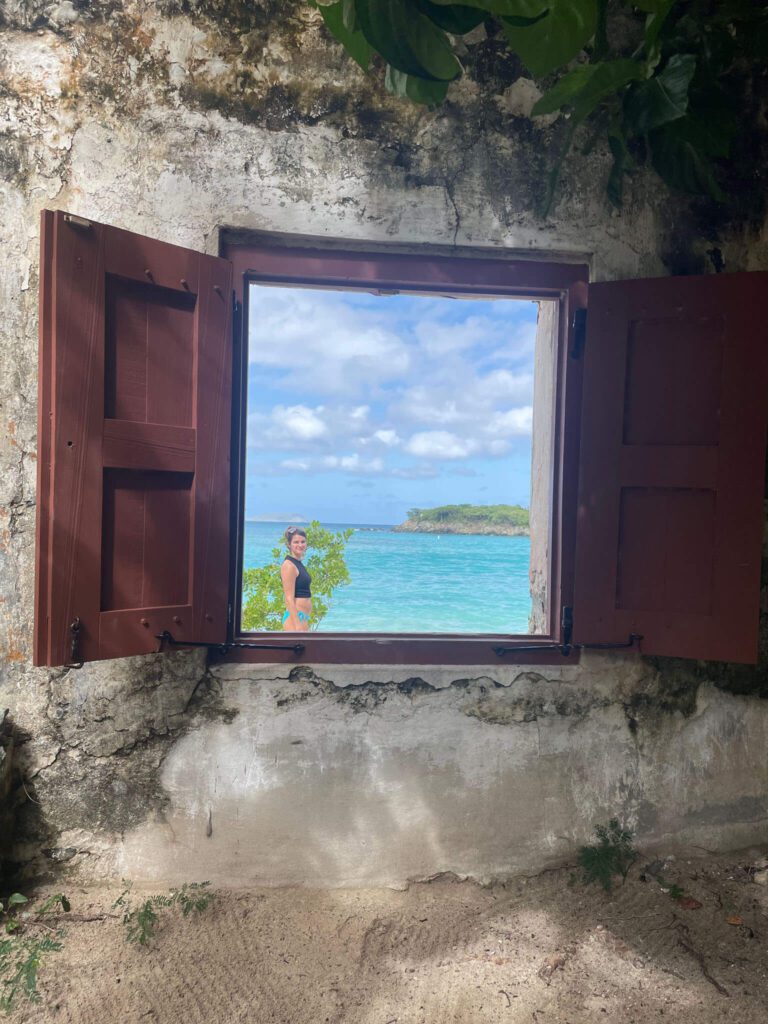
What To Budget For Virgin Islands National Park
There is no entrance fee for Virgin Islands National Park. However, there is a $5/person entrance fee to the most popular beach, Trunk Bay. They only accept credit cards and your America The Beautiful Pass is not valid at Trunk Bay.
There are food sellers at Trunk Bay and Maho Bay. However, food in the park is pricey – food on the whole island is pricey. So if you are planning on purchasing food, plan on spending about $20/person for lunch type food. Drinks are around $10/drink.

Safety
Let’s talk a little safety for you and a little safety for the world around you. Don’t touch things. Don’t touch the plants (some can cause rashes or poke you), don’t touch the coral (you can kill it or it can sting you) and definitely don’t touch the sea turtles (it is a felony). So if you see something you want to touch, just do as your preschool teacher taught you and keep your hands to yourself.
Another safety tip for Virgin Islands National Park is download an offline map on Google Maps or bring a GPS device with you. Because of the very hilly nature of the area, you can loose cell service. This is fine for navigating a vehicle as there are only two main roads so you really can’t get lost while driving. However, the hiking trails are not well marks and often overgrown. So these maps really come in handy when hiking in the dense forests.
Hopefully, this post has helped you to plan your own visit to Virgin Island National Park. It was one of the most relaxing parks we’ve been to! We hope you enjoy your visit. If you have any questions or comments feel free to leave them below and we’d be happy to help.
